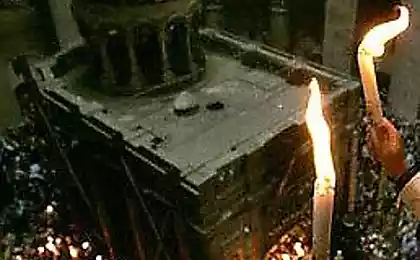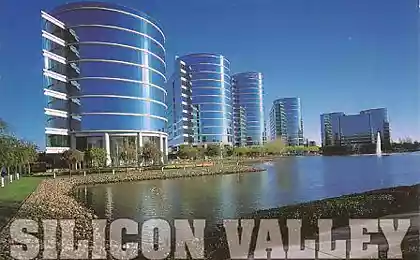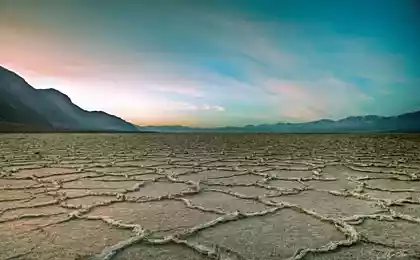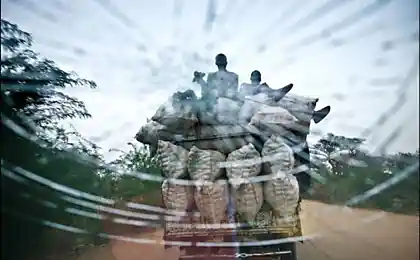457
Valley of Fire – heart of the Mojave desert
Unusual place located near Las Vegas. From city casinos have to drive 58 miles (93.3 kilometers) to the northeast to reach the Valley of Fire. This Park is the oldest Park of Nevada – he is 80 years old.

Officially, the Valley of Fire Park was opened in 1935. The state Park has an area of about 35,000 acres (14.2 ha). "Valley of Fire" is a beautiful title that really shows the magnificence of this place. The unusual name of the Park was named for the red sand formations, formed from great sand dunes 150 million years ago (Mesozoic era). These brilliant Sandstone be in the fire every time to the Park is sun – rocks reflect the sun's rays. In composition the rocks consists of limestone, shale and conglomerates.
Valley of Fire is marked as a Historical landmark, Nevada No. 150 (the First state Park of Nevada). In the valley there are the "main" road that connects the East and West entrances to the Park. Long this road is 10.5 miles (16.9 km). In 1995, the Valley of Fire got its second name – a Scenic byway in Nevada.

The first people who visited the Valley of Fire were the Anasazi Indian tribe. They were farmers who lived in the nearby fertile Moapa valley. Their visits to the Valley of Fire was probably associated with hunting, gathering and religious ceremonies. Evidence of this are the petroglyphs (rock art) in several places throughout the Valley of Fire.
The most impressive Valley of Fire is in the spring. At this time there blooms marigold, Indigo Bush and mallow. The Park also grow shrubs of creosote.
Valley of Fire is teeming with wildlife, but most of them are nocturnal. There are many species of lizards and snakes, and there are also antelope, skunks, foxes, bobcats, rabbits, coyotes and gophers. Else You are likely to see sheep in the middle of the day. You may even be lucky enough to find rare desert tortoise.
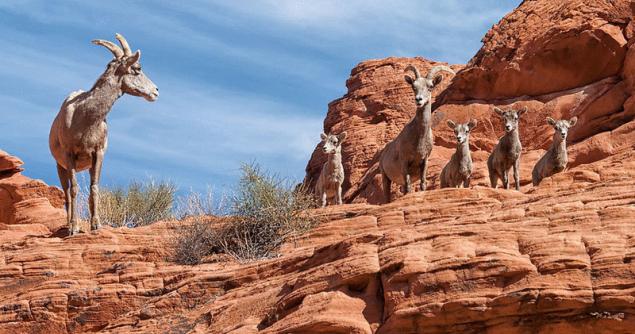
Amazing there is not only the landscapes, flora and fauna, but also the climate. Winter temperatures range from zero to 75 degrees Fahrenheit ( -17 to +2 degrees Celsius). Daily summer highs often exceed 100 degrees (38 degrees Celsius). In summer the temperature can vary significantly by day and by night. The average annual rainfall is four inches (10.2 cm) – then in winter there are light rains and summer showers and thunderstorms.published
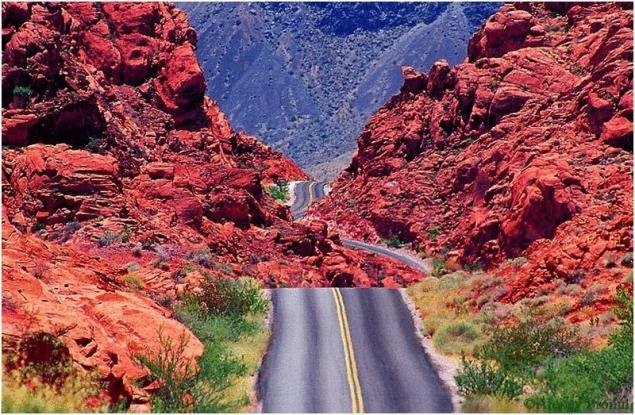
P. S. And remember, just changing your mind — together we change the world! ©
Source: mif-facts.com.ua

Officially, the Valley of Fire Park was opened in 1935. The state Park has an area of about 35,000 acres (14.2 ha). "Valley of Fire" is a beautiful title that really shows the magnificence of this place. The unusual name of the Park was named for the red sand formations, formed from great sand dunes 150 million years ago (Mesozoic era). These brilliant Sandstone be in the fire every time to the Park is sun – rocks reflect the sun's rays. In composition the rocks consists of limestone, shale and conglomerates.
Valley of Fire is marked as a Historical landmark, Nevada No. 150 (the First state Park of Nevada). In the valley there are the "main" road that connects the East and West entrances to the Park. Long this road is 10.5 miles (16.9 km). In 1995, the Valley of Fire got its second name – a Scenic byway in Nevada.

The first people who visited the Valley of Fire were the Anasazi Indian tribe. They were farmers who lived in the nearby fertile Moapa valley. Their visits to the Valley of Fire was probably associated with hunting, gathering and religious ceremonies. Evidence of this are the petroglyphs (rock art) in several places throughout the Valley of Fire.
The most impressive Valley of Fire is in the spring. At this time there blooms marigold, Indigo Bush and mallow. The Park also grow shrubs of creosote.
Valley of Fire is teeming with wildlife, but most of them are nocturnal. There are many species of lizards and snakes, and there are also antelope, skunks, foxes, bobcats, rabbits, coyotes and gophers. Else You are likely to see sheep in the middle of the day. You may even be lucky enough to find rare desert tortoise.

Amazing there is not only the landscapes, flora and fauna, but also the climate. Winter temperatures range from zero to 75 degrees Fahrenheit ( -17 to +2 degrees Celsius). Daily summer highs often exceed 100 degrees (38 degrees Celsius). In summer the temperature can vary significantly by day and by night. The average annual rainfall is four inches (10.2 cm) – then in winter there are light rains and summer showers and thunderstorms.published

P. S. And remember, just changing your mind — together we change the world! ©
Source: mif-facts.com.ua
Scientists have discovered creatures living in the crater of an active volcano
The first Lego bricks without plastic



